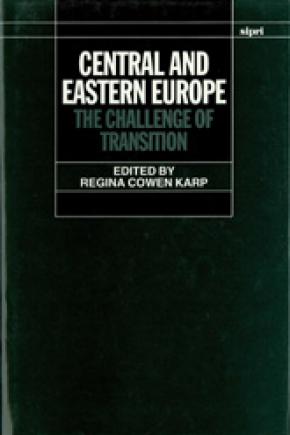Central and Eastern Europe: The Challenge of Transition
The collapse of communist rule in the late 1980s set in motion a process of radical political, social and economic change in the former USSR and Central and Eastern Europe. Throughout the eastern half of Europe and beyond, among the member countries of the Commonwealth of Independent States (CIS) the early 1990s have been characterized by attempts to move away from the legacy of the communist era towards new democratic political structures, market economies and societies based on the rule of law.
The challenges and dilemmas posed by these developments to the stability of the region are the central focus of Central and Eastern Europe: The Challenge of Transition. Recognizing the need to adopt an approach doing justice to what is unquestionably a momentous process of change, the book focuses on the security implications of continuing developments in the political, social, economic and military spheres. The heart of the book is a set of case studies examining in detail the situation in a number of Central and East European countries: Hungary, Poland, the Czech and Slovak republics, Russia, Ukraine and Belarus, the Baltic states, the Balkan region and in the former Yugoslavia. By way of introduction to the case studies, a further section of essays assesses developments in Central and Eastern Europe from a broader thematic perspective, focusing on such important issues as the role of European organizations in the ethnic conflicts currently much in evidence throughout the region.
Part I. Introduction
1. The challenge of transition
Regina Cowen Karp
Part II. Central and Eastern Europe: old legacies, new conflicts
2. Post-communist countries: Challenges and problems
Adam Bromke
3. Regional organizations and ethnic conflict
Jennone Walker
Part III. The regional debate
4. Poland: National security in a changing environment
Hieronim Kubiak
5. The Czech and Slovak republics: Security consequences of the breakup of the CSFR
Jan Urban
6. Hungary: Defining the boundaries of security
Pál Dunay
7. Creating security in the Balkans
Daniel N. Nelson
8. The former Yugoslavia: Emerging security orientations
F. Stephen Larrabee
9. Russia: Security in transition
Alexander Konovalov
10. Security issues in Ukraine and Belarus
Kathleen Mihalisko
11. The CIS: Sources of stability and instability
Caroline Kennedy-Pipe
12. The Baltic states: Quo vadis?
Peter Vares and Mare Haab

